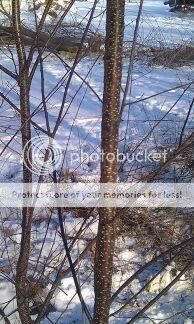


Su kraus wrote:My daughter is living in Senegal, W Africa and has been told it is very common to get parasites especially foot worm. Searching the web I found a company selling a trio of Balck Walnut tincture (made from green hulls of walnut) whole cloves and one other thing I've forgotten! Does anyone know if this is valid or have any recommendations of herbal remedies I should send my daughter. Thank you.
wayne stephen wrote:I planted 25 or so tubers last year. They did fairly well . I am interested in this batch for stock not this years food. If I leave them where they are will they multiply or do I need to dig them up and replant? I have too many other projects right now. I have heard they become woodier as they stay in ground but I assume they will form better eating tubers if I replant later. Right now I am just interested in forming a huge patch then to become bigger patches. What results have you all had ?

Dave Aiken wrote:Good tips, Michael. Thank you.
So the next question is, assuming they're black cherry, should they stay or should they go? My plan was to plant a sugar maple or perhaps a shellbark hickory, with some berry producers nearby (aronia and/or service berry). My goal is human edible fruits/nuts. The black cherry is not great for either. The lumber value is high, but I'll never harvest the timber for that purpose. If a tree must be removed, or if one is wind damaged, for example, I may use the lumber for something, but that's not my goal.
Thoughts?

Dave Aiken wrote:OK, guys. Gold star to anybody that can identify these two young trees. I have a couple of guesses, but since there are no leaves this time of year and they're young, it's very tough because the bark isn't fully developed. I had my saw at the ready, but since I was pretty unsure, I spared them for now. I have largely cleared some rough canopy trees from this area to make room for some new tree plantings this spring. But I'd kick myself if I removed something I later found to be quite desirable...been there, done that. Rather not repeat that mistake.

Bark is dark with white spots. This may change as the trees mature (unless I drop them, per my plan)

Branches are alternate:
